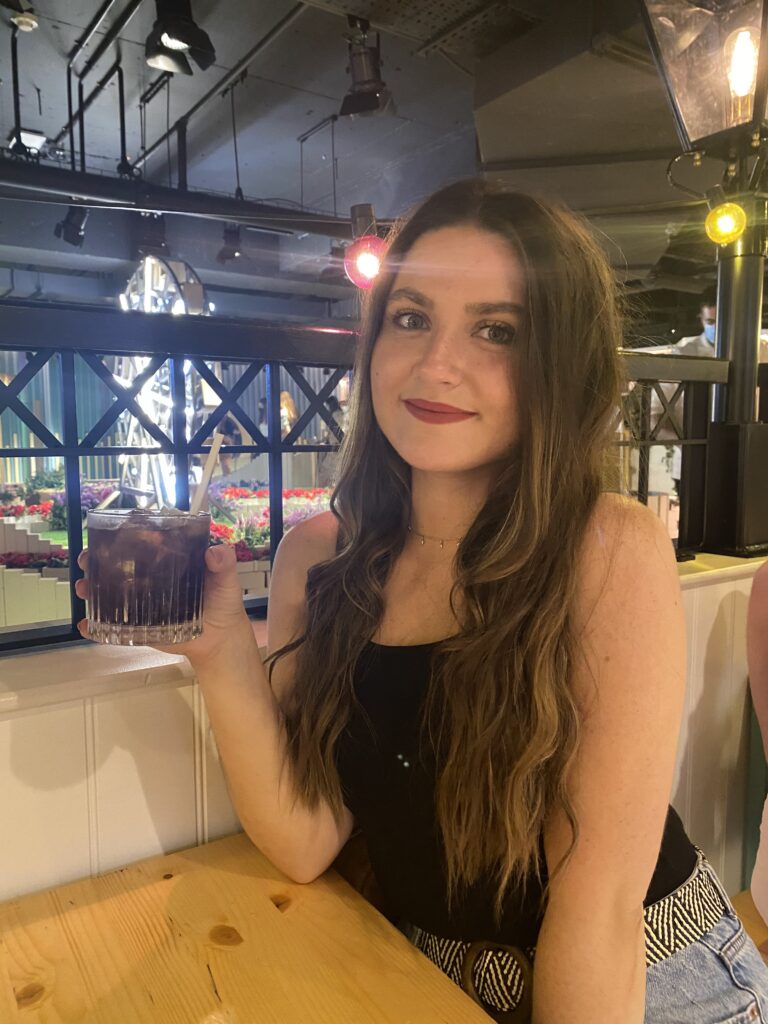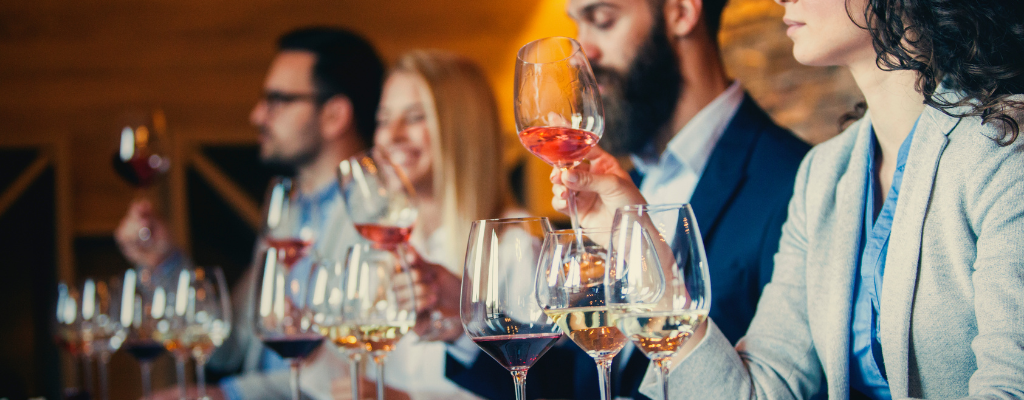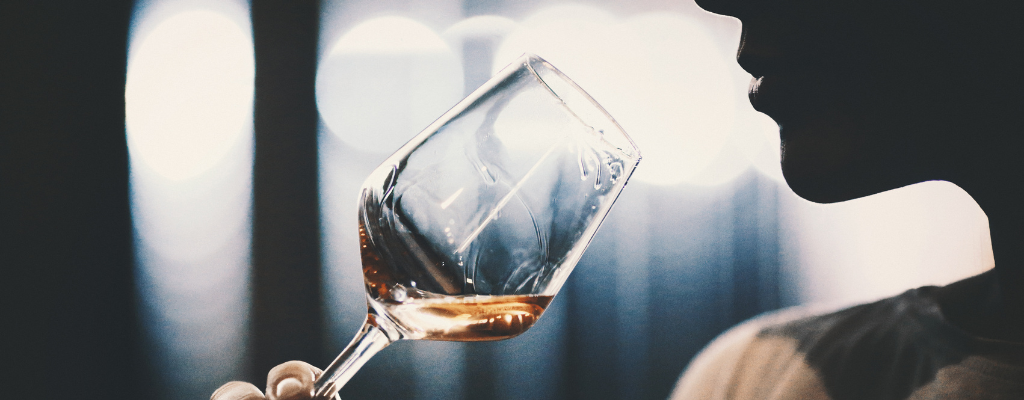Published on October 13, 2023.
Why do we SEE, SMELL, & TASTE wine?
Oenophobia – The fear of wine. Oeno being Greek for wine and phobia being fear. The reality is that we are all a little intimidated by the grand subject of wine, and if our customers know more than us, then it can be slightly embarrassing when presenting a wine list. For the customers that do not know, or just to impress the ones that do, learn how to ‘See, Smell & Taste’ and teach your customers something they may not know!
SEE – What are we looking for?
With white wine, we can get an idea of age and alcohol volume just by looking. As a rule of thumb, if the wine is a light-yellow hue, then it is most likely to be very young. The darker it is, the older it will be. Now pour a little wine into your favourite glass and tip it slightly, forwards and then back to upright. You will notice that the wine will leave a film (known in the trade as the legs) that will almost immediately disperse. The longer it holds the higher the alcohol content will be. Again, this is just a rule of thumb as sweeter wines will hold fast but may still be low in alcohol.
You can do the same with red wine and guess the alcohol content as you did with white. However, when guessing the age hold the glass of red wine over a piece of white paper and look to the edge. The browner it is, the older it will be. Young reds will look very purple. How dark the wine is will be dependent on the grape variety used and he length of contact the juice has had with the skins. The darkest wines are usually the fullest bodied. Lots of practice and you will be able to guess the alcohol content to within ½%!
SMELL – Why do we smell wine?
Spin the wine in the glass to release all the lovely aromas (also known as the nose), or at least hopefully they are lovely! If you can smell damp dogs, then the wine is almost certainly corked in which case you need to send it back to the suppliers. Assuming the wine is fine, then use your imagination to compare the aromas with other scents that you have smelt before. Old world Sauvignon Blanc can often smell of freshly cut grass. New world Chardonnay can smell of peaches and apricots etc. Again, practice makes perfect here. However, understanding aroma is integral to wine and food pairing. WINE FACT – an aroma becomes a bouquet when the wine is 10 years old.
TASTE – What defines the tase?
It takes practice, but if you can hold a small amount of wine in your mouth and suck in some air (you will make yourself splutter a couple of times before you can master this but leaning forward slightly does help), you will really bring out the flavours. Again, identify the taste with familiar flavours that you have had before. Cabernet Sauvignon will often taste of dark fruits, Tempranillo will taste of leather and tobacco (honestly) and a decent Claret may taste of dusty attics. It really does take time to understand the flavours, but this is also key to food pairings.
Share this article
About the author

Chloe Lewis
Chloe looks after all copywriting and proof-reading for Drink Warehouse UK, working with the Marketing team to deliver educational content to all our customers. She has spent many years in the hospitality sector, moving from behind the bar to now helping venues to stock their own. You can find more from Chloe about beer, cider, spirits, wine, non-alcoholic, soft drinks and RTDs all over our blogs, website, social media and Set The Bar magazine.
Click here to receive the latest and greatest promotions, new products, competitions and so much more straight to your inbox.






